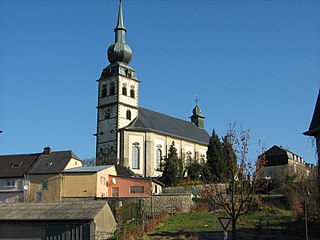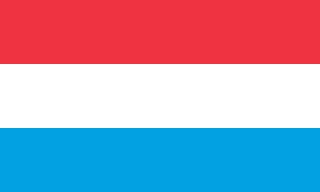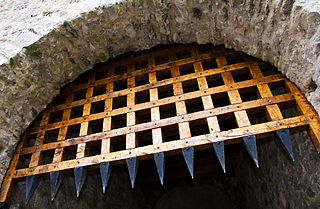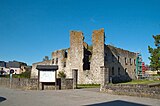
Middleham Castle a ruined castle in Middleham in Wensleydale, in the county of North Yorkshire, England, was built by Robert Fitzrandolph, 3rd Lord of Middleham and Spennithorne, commencing in 1190. The castle is most famous for being the childhood home of King Richard III, though he spent very little of his adulthood there. The castle was built to defend the road from Richmond to Skipton, though some have suggested the original site of the castle was far better to achieve this than the later location. After the death of King Richard III the castle remained in royal hands until it was allowed to go to ruin in the 17th century. Many of the stones from the castle were used in other buildings in the village of Middleham.

Castle Rising is a ruined medieval fortification in the village of Castle Rising, Norfolk, England. It was built soon after 1138 by William d'Aubigny II, who had risen through the ranks of the Anglo-Norman nobility to become the Earl of Arundel. With his new wealth, he constructed Castle Rising and its surrounding deer park, a combination of fortress and palatial hunting lodge. It was inherited by William's descendants before passing into the hands of the de Montalt family in 1243. The Montalts later sold the castle to Queen Isabella, who lived there after her fall from power in 1330. Isabella extended the castle buildings and enjoyed a regal lifestyle, entertaining her son, Edward III, on several occasions. After her death, it was granted to Edward, the Black Prince, to form part of the Duchy of Cornwall.
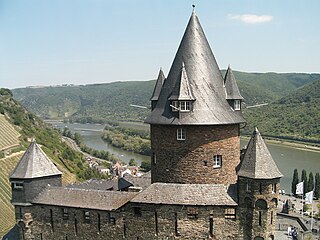
Stahleck Castle is a 12th-century fortified castle in the Upper Middle Rhine Valley at Bacharach in Rhineland-Palatinate, Germany. It stands on a crag approximately 160 metres (520 ft) above sea level on the left bank of the river at the mouth of the Steeg valley, approximately 50 kilometres (31 mi) south of Koblenz, and offers a commanding view of the Lorelei valley. Its name means "impregnable castle on a crag", from the Middle High German words stahel (steel) and ecke. It has a water-filled partial moat, a rarity in Germany. Built on the orders of the Archbishop of Cologne, it was destroyed in the late 17th century but rebuilt in the 20th and is now a hostel.

Nunney Castle is a medieval castle at Nunney in the English county of Somerset. Built in the late 14th century by Sir John Delamare on the profits of his involvement in the Hundred Years War, the moated castle's architectural style, possibly influenced by the design of French castles, has provoked considerable academic debate. Remodelled during the late 16th century, Nunney Castle was damaged during the English Civil War and is now ruined.
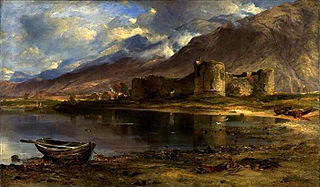
Inverlochy Castle is a ruined, 13th-century castle near Inverlochy and Fort William, Highland, Scotland. The site of two battles, the castle remains largely unchanged since its construction. It is now in the care of Historic Scotland.

The Strečno Castle (also called Strechun, Strechyn, Streczen, Streczan alebo Strežín) is a reconstructed ruin of a medieval castle of an irregular plan located in northern Slovakia, 12 km east of Žilina. The castle stands on a 103-metre-high (338 ft) calcite cliff above the international road E50 and village Strečno. Along with the Old castle constitutes a significant landscape landmark of the Upper Váh region. Nowadays, after reconstruction, there are expositions of the Vah region regional museum. The first recorded mention of the stone castle is from 1316. Today the castle belongs to the national cultural heritage of the Slovak republic.

The Château de Tonquédec is a castle in the commune of Tonquédec in the Côtes d'Armor département of France. It is one of the most visited monuments in the Côtes d'Armor.
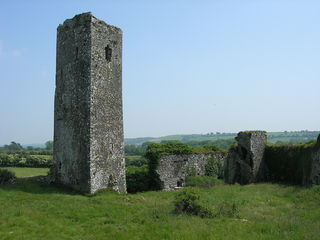
Ballincollig Castle is a Norman castle to the south of the town of Ballincollig, County Cork, Ireland built after the Norman invasion of Ireland. In its prime, the castle was inhabited by the Barrett family, who had control of the local area. The castle still stands today, albeit largely in ruin. The original keep still remains, as does most of the curtain wall and two towers.

Bourglinster Castle is located in the village of Bourglinster in central Luxembourg some 17 km (11 mi) to the east of Luxembourg City. Now housing a restaurant and facilities for business and cultural gatherings, the castle has a history stretching back to the 11th century.

Hollenfels Castle, with a history dating back to the 11th century, is one of the castles located close to the River Eisch in the Valley of the Seven Castles in central Luxembourg. Today it is used as a centre for activities for young people, including a nearby youth hostel.

Mersch Castle in central Luxembourg is one of the castles belonging to the Valley of the Seven Castles. Located in the centre of Mersch, its history goes back to the 13th century. Today the castle houses the administrative offices of the local commune.

The New Castle of Ansembourg, in central Luxembourg is one of the castles belonging to the Valley of the Seven Castles. Located about one kilometre or just over half a mile below the Old Castle of Ansembourg, it was built by the industrialist Thomas Bidart in 1639.

Ansembourg Old Castle, known as the Old Castle of Ansembourg, in central Luxembourg is one of the castles belonging to the Valley of the Seven Castles. Located high above the little village of Ansembourg, the medieval castle is the private residence of the current Count and Countess of Ansembourg.
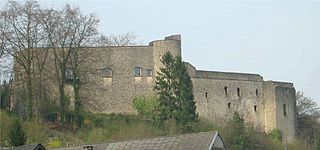
Septfontaines Castle in central Luxembourg is one of the castles belonging to the Valley of the Seven Castles. Located high above the village of Septfontaines, the medieval castle is now privately owned.

Differdange Castle, located on a hill in the centre of Differdange in southern Luxembourg, was built in 1577 although an earlier fortified castle of Differdange dates from around 1310. Today's residential château is used by Miami University.

Esch-sur-Sûre Castle, now a ruin, is located on a spur in the small town of Esch-sur-Sûre in the north-west of Luxembourg. It is naturally protected by a sharp meander in the River Sûre which surrounds the town and the castle on three sides.

Brandenbourg Castle, now a ruin, is located on a promontory some 70 metres above the village of Brandenbourg in north-eastern Luxembourg. It has a history going back to the 9th and 10th centuries when there was a wooden fort on the site. The 13th century keep, now 11.9 metres high, used to have four floors, only three of which remain. In 1668, the French attacked the castle which subsequently fell increasingly into ruin. It is now owned by the Luxembourg State.
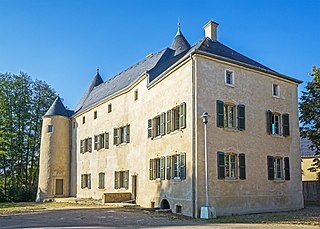
Aspelt Castle, located in Aspelt in the south of Luxembourg, is a Baroque residence built in 1590 on the site of a medieval castle from the 11th century. There are now plans to renovate the building.

Guardaval Castle is a ruined castle in the municipality of Madulain of the Canton of Graubünden in Switzerland.


